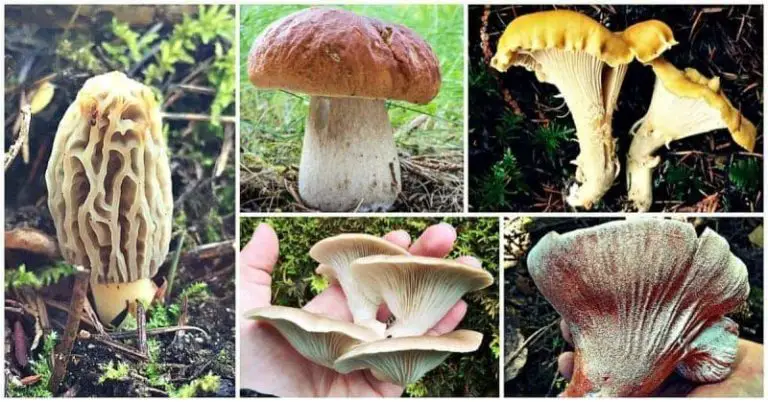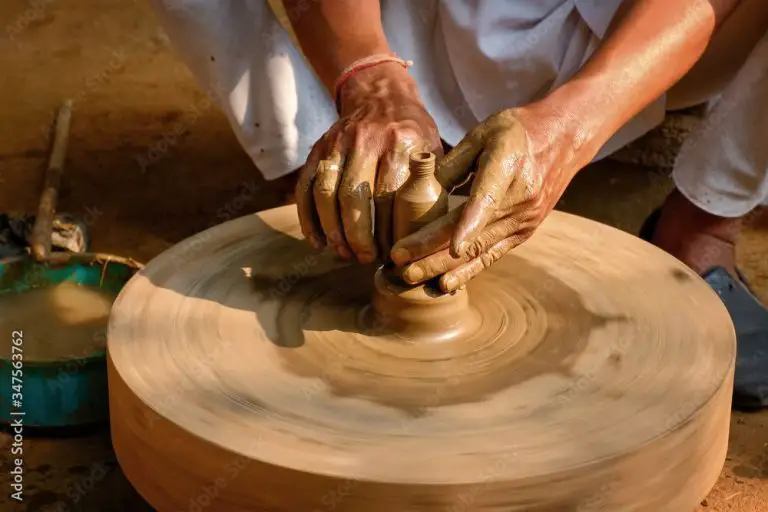What Materials Are Used In Bulul?
Bulul are wooden ancestral figures made by the indigenous peoples of the Philippines, primarily in the northern Luzon region. The term “bulul” refers specifically to carved wooden figures depicting ancestors, which play an important role in religious rituals and ceremonies.
Bululs were usually created in pairs – one female and one male figure. They represent the spirits of ancestors and are used to ask for favors like good health, bountiful harvests, and protection. The bululs are either kept in home shrines or in special spirit houses built in fields and farms. The figures act as guardians and intermediaries between the spirit world and the human world.
Bululs are considered sacred objects and symbolize the core values and beliefs of the indigenous communities that create them. They embody the community’s respect for elders, family ties, agricultural and fertility rites, and spiritual traditions. Producing a bulul requires great skill, effort and time, further adding to their cultural significance.
Wood
Wood is the most common material used for sculpting bulul. Indigenous wood like narra, molave, kamagong, ebony and ipil are frequently used by traditional artists. Each type of wood has different properties that make them suitable for carving.
Narra is a popular choice as it is relatively soft and easy to carve. The reddish color of the wood also gives the bulul a warm, earthy appearance. Molave is denser and more difficult to carve, but it produces finer details and takes staining well. Kamagong has an ebony-like grain that creates beautiful patterns.
Wood is preferred for its availability, workability and symbolism. Since many tribes live in forested areas, wood is abundant and does not need to be traded or bought. The types of trees are also culturally significant, with legends attached to certain species. The process of carving wood to form the bulul is considered sacred.
The main techniques used are whittling with a bolok knife, chiseling, engraving and polishing. The bolok is used to roughly shape the form and create facial features. Chisels carve finer details and textures on things like hair, clothing and accessories. Engraving tools decorate the bulul with intricate patterns and symbols. Sanding and polishing give the final smooth finish.
Bone
Bone was one of the earliest materials used to carve bulul. Indigenous tribes had access to bones from hunting and butchering animals. The bones from deer, carabao, pigs, and even whales were preferred for their size and density which made them easier to carve.
The bones were cleaned, dried, and carved with simple hand tools like knives and chisels. Many tribes became highly skilled at carving intricate designs and details into the bones. The natural marrow and oils in the bones gave them a smooth, glossy finish when polished.
Bone was an ideal material because it was strong, durable, and could be carved into smooth statues. It was also more resistant to insects, rot, and decay than wood carvings. The bones developed a nice patina over time. Carvers would stain or paint the bone carvings with natural pigments to accentuate the designs.
Common techniques for carving bones included cutting, sawing, drilling, scraping, sanding, and polishing. Intricate patterns and textures could be carved into the surface. Bones from larger animals allowed carvers to sculpt elaborate headdresses, jewelry, and accessories on the figures.
Bone bulul have a very distinctive, organic look and feel. Their neutral tones beautifully complement the dark wooden bodies. Many antique tribal bone bulul are prized for their historic value and display of carving skills.
Horns
Horns are a commonly used material for bulul carving. The types of animal horns utilized include water buffalo, carabao, deer, cow, and goat horns. Horns are valued for their hardness, sheen, and natural curved shape that lends itself well to carving.
There are several reasons why horns are a preferred material for bulul:
- Horns are naturally hollow and lightweight, making them easy to carve.
- They are durable and weather resistant.
- Horns have a smooth, polished surface when carved.
- The curved shape of horns complements the human-like form of the bulul.
- Horns symbolize strength and protection in Filipino culture.
Crafting a bulul from horn requires specialized carving techniques. The artist begins by sawing off the tip of the horn to create a flat base. Designs are sketched onto the surface before carving begins. A combination of cutting, shaving, and sanding tools are used to shape the figure and details. The bulul’s features are carved to showcase the natural whorls and textures of the horn material. Great care is taken to carve with the grain of the horn to prevent cracking. The completed horn bulul is then polished using sandpaper and buffing cloths to achieve a smooth finish.
Mother-of-Pearl
Mother-of-pearl was a material commonly used to decorate bulul. The iridescent, luminous quality of mother-of-pearl made it an eye-catching embellishment. There are several reasons why mother-of-pearl was favored for bulul:
- Abundance – Mother-of-pearl was readily available from the abundant seashell trade.
- Aesthetics – The shimmering, lustrous appearance of mother-of-pearl enhanced the beauty of bulul.
- Symbolism – In some areas, mother-of-pearl represented fertility, new life, and wealth.
Artisans used various techniques to apply mother-of-pearl:
- Inlay – Thin pieces carefully cut to fit into cavities carved into the wood or bone.
- Overlay – Larger pieces affixed to the surface with resin or glue.
- Mosaic – Small fragmented pieces arranged in patterns and affixed to the surface.
The striking mother-of-pearl inlays and overlays added light and life to the bulul.
Natural Pigments
Native Filipinos used a variety of natural pigments and dyes to color the bulul statues. These pigments were derived from organic materials found in their local environment like plants, fruits, and minerals. Some commonly used pigments included:
Annatto – A reddish pigment made from the seeds of the achiote tree. It provided a bright, saturated red color.
Soot – Produced by burning wood, soot created a black pigment for outlining designs.
Turmeric – The root of this plant produced a vibrant yellow color when ground into powder.
Lime – Crushed limestone or seashells made a white pigment for lightening colors.
These natural pigments allowed artisans to paint the bulul in symbolic colors with cultural meaning. Reds represented blood, courage, and life. Black was associated with potency and death. The colors also made the carvings more visually striking and appealing.
The pigments were mixed with water or other liquids like coconut milk to create a paint-like medium for application. They used simple painting tools like stiff brushes made of bamboo, sticks wrapped in leaves, or fabrics. Details and designs were intricately painted by hand in geometric patterns or abstract shapes.
Decorative Elements
Bulul often incorporate decorative elements beyond the main materials to add visual interest and symbolism. These include:
Feathers – Brightly colored feathers from roosters, parrots, and other birds are attached to bulul to represent flight and the spirit world. Certain feathers are believed to have protective powers.
Fibers – Abaca, jute, and woven banana fibers symbolizing connectivity may adorn bulul. Specific colors represent concepts like bravery and health.
Beads – Tiny glass and stone beads are strung together into necklaces draped on bulul. They represent wealth and status, with particular patterns and colors holding meaning.
By incorporating special decorative elements, bulul take on deeper spiritual significance and display the artistry of their creators. The choice of materials and designs reflect the culture and beliefs of the Indigenous groups who craft them.
Regional Styles
There are interesting differences in the materials used for bulul across different regions and ethnic groups in the Philippines. In northern Luzon, the Kalinga and Ifugao peoples often carve bulul from hardwoods like narra and ipil. The carvings tend to have minimal ornamentation beyond the basic humanoid form. In contrast, bulul from the Bontoc region may incorporate more stylized or abstract elements carved into the wood.
In the Visayan islands in central Philippines, bulul are frequently carved from taglag wood or other softwoods. The Manobo tribes in Mindanao use materials like bamboo and rattan to make bulul figures that are relatively small and portable for rituals. Bulul from Mindanao also exhibit more intricate carving, with some figures having movable limbs attached with cord. The Tausug people incorporate mother-of-pearl inlays and beads for decoration.
While carved wood remains the most common material, bone, horn, and shell have traditionally been used for bulul by groups lacking abundant wood resources. But modern materials like plastic, resin, and cement are also sometimes used today to make bulul souvenirs and handicrafts for sale.
Modern Materials
In recent years, contemporary artists have started experimenting with new types of materials for bulul beyond the traditional wood, bone, and other natural elements. Some of the modern materials being used include:
Resin – Artists have begun casting bulul in clear epoxy resin. This gives the figure a sleek, modern aesthetic while preserving all the intricate details carved into the original.
Plastics – Some mass-produced souvenir bulul are made of durable plastics like polyresin. This makes them lightweight and more affordable to produce.
Metals – Metallic paints and metal bulul made of recycled tin or aluminum have become popular for modern interpretations. The shiny metallic surface puts a contemporary spin on the traditional designs.
Synthetic materials – Many artists are also incorporating synthetic hair, glitter, sequins, and fabrics into their contemporary bulul designs.
While natural materials hold cultural significance, these modern mediums allow contemporary artists to put a fresh, innovative spin on the ancient Ifugao sculptures.
Conclusion
To sum up, bulul figures feature a diverse array of materials that reflect local cultures and environments across different regions of the Philippines. Wood, particularly narra, remains the most ubiquitous material for carving the head and body. Bone, animal horns, and mother-of-pearl are common for ornamentation, given their natural prevalence and artisanal significance. Pigments derived from native plants provide traditional colors for ornate designs. While modern materials offer convenience and less weight, traditional mediums carry deep meaning and remain integral to conveying the bulul’s spiritual purpose. The choice of materials shapes both the sculpture’s physical attributes and symbolic power.



